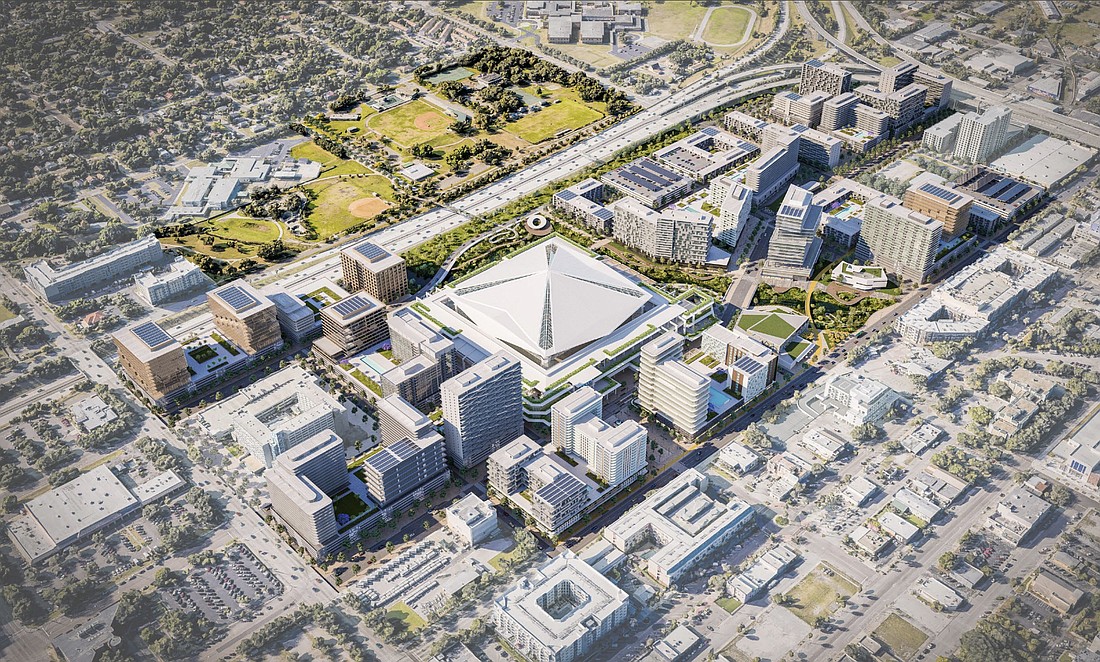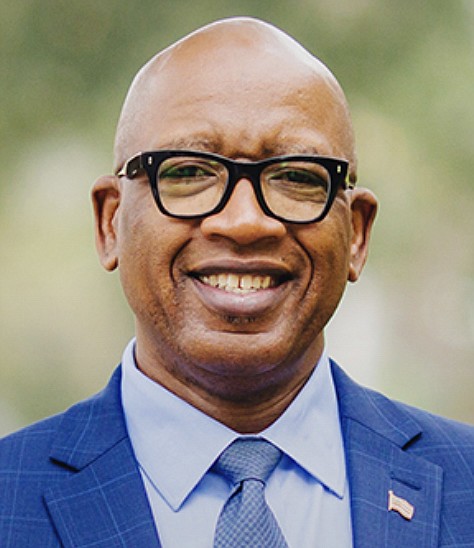- March 29, 2025
-
-
Loading

Loading

St. Petersburg Mayor Ken Welch says he has “full faith” that the Tampa Bay Rays and their development partner, Hines, will execute the Tropicana Field redevelopment proposal that Welch chose Jan. 30 over three other bids.
Welch and two city staff members, Economic and Workforce Development Director Brian Caper and Community and Neighborhood Affairs Administrator James Corbett, appeared at an Urban Land Institute StimULI Breakfast on Thursday, March 9, at the Birchwood Inn in downtown St. Pete. Their panel discussion was moderated by Rena Frazier, a Tampa real estate agent who was featured in the reality TV series “Selling Tampa” on Netflix.

Welch offered few specifics about the status of the Trop project, citing the city’s ongoing negotiations with the Rays and Hines as the two sides work to agree on a term sheet. During a brief Q&A at the end of the event, Welch was asked directly if the city had a contingency plan that would come into effect if Rays/Hines decided not to build a new baseball stadium on the site.
“We are in negotiations right now, but I have full faith that the new stadium will be on that site,” he says. “I have no reason not to think that.”
Yet speculation the Rays remain interested in Tampa continues to linger. Moving across the bay would almost certainly boost the team’s woeful attendance, and none other than Major League Baseball Commissioner Rob Manfred has said other locations could be in play.
“I’m not concerned about that,” Welch says of doubts about the Rays’ intentions and MLB's desires.
I think everyone understands the stress we’re under, in terms of our economic vitality, if we can’t have a base of affordable and workforce housing for the people who make our community work. Folks are moving farther away to find housing that they can afford, and at some point, that begins to impact your economy." — St. Pete Mayor Ken Welch
However, Rays President Brian Auld, in the audience at Thursday’s ULI event, caught flak from former St. Pete Mayor Rick Kriseman when the Rays executive recently referred to St. Pete as a “small city” with a MLB team. In a Facebook post, Kriseman takes the team’s front office to task for viewing the Trop redevelopment as “just another business deal.”
Kriseman writes, “It's an honor, the significance of which seems lost on the Rays when leadership insults St. Pete and its residents by calling it a ‘small city.’”
Welch’s predecessor then went on to cite numerous statistics about the size of St. Pete.
“St. Petersburg is the fifth-largest city in Florida,” Kriseman writes. “Whoever argues that this is a small metropolitan area is wrong. Of the 40 metro areas listed by the U.S. Census Bureau, the Tampa Bay area is number 18. We’re also the 13th-largest media market in the country, according to Nielsen DMA Rankings for 2023.”
He continues, “When the Rays (continue to) talk about leaving the Tampa Bay area to move to another city, let's be factually accurate. The metro areas talked about the most all are smaller in comparison, both in population and TV media market size — Las Vegas (28th metro area, 40th media market), Nashville (37th metro area, 29th media market), Charlotte (22nd metro area, 22nd media market) [and] Portland (25th metro area, 21st media market).”
Another topic that surfaced at the ULI event was the amount of affordable housing included in the Rays/Hines proposal for the 86-acre Trop site, to which the city has taken to referring as the Historic Gas Plant District in recognition of the predominantly Black neighborhood razed to make room for the stadium.
Welch has repeatedly touted affordable housing as one of the city’s top priorities for the property, but the Rays/Hines plan calls for less affordable units than some of the other bids.
“I think everyone understands the stress we’re under, in terms of our economic vitality, if we can’t have a base of affordable and workforce housing for the people who make our community work,” he says. “Folks are moving farther away to find housing that they can afford, and at some point, that begins to impact your economy.”
The mayor admitted “other proposals were stronger” in terms of affordable housing, but “the other factor is certainty. You can have a large number, but if it's dependent on a revenue source that’s risky, like 9% tax credits — and that’s not a given; it's very tough to get 9% tax credits — then. … You’ve got to go with the best package that has the most certainty, that is the most reputable, that has the experience.”
He added, “Throwing up 5,000 units that are speculative versus 1,500 units that have solid financing behind it, I don't think it's apples to apples. That's how I came to that decision. And that's a starting point; I want to see more than that.”
The entire Rays/Hines proposal is available online.